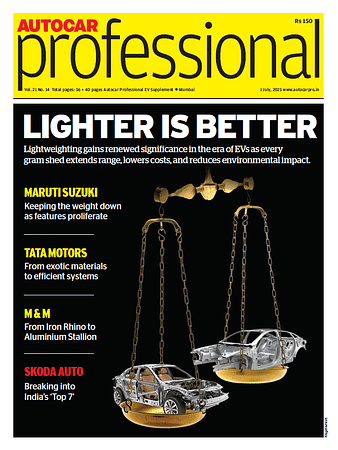70% Foreign-Made: India's EV Dream Stuck in Import Gridlock
Key components like battery cells and ECUs hinder india's EV supply chain localisation, despite efforts to boost domestic production.
India’s electric vehicle (EV) supply chain remains heavily reliant on imports with only 30-40% localisation achieved so far, according to ICRA Research. While certain components like chassis, body parts, and some control units are largely manufactured domestically, key high-tech components such as battery cells, electronic control units, and battery management systems (BMS) are still predominantly sourced from international markets. This heavy dependence on imports is leading to a price disparity, making EVs more expensive in India compared to global markets where a higher degree of localisation has helped reduce costs.
According to ICRA, battery cells remain the least localised due to their high technological and capital requirements. Electronic control units and BMS, which are crucial for EV efficiency and safety, also have limited domestic production. On the other hand, motors, controllers, and other auxiliary components such as HVAC systems and control units have a relatively higher degree of localisation.
“This level of localisation is because of the fact that there has been an absence of technological capability across the value chain. And also the fact that the investments inherently required for stepping up is also quite high. The breakeven volumes are yet to be achieved, hence the viability for such investments is being assessed by the component players in a bigger manner. Since the technology related aspects are being taken into the incentive bracket, we expect that it is a matter of time that you know the shift towards a higher penetration is going to happen,” said Srikumar K, Senior Vice President and Co-Group Head, Corporate Ratings, ICRA Ltd.
He added that battery cells, which constitutes around 35-40% of the vehicle cost in certain segments, continues to be entirely imported. “The relatively lower localization levels give rise to a good amount of manufacturing opportunities for the auto component suppliers over the medium term. These are the avenues for the ancillaries. If you have to look from revenue generation standpoint, from the EV segments increasing in EV penetration and volumes will be critical for these product segments,” he said.
“As the industry matures and investment flows into R&D and advanced manufacturing, India’s localisation levels in the EV supply chain are expected to improve, potentially reducing costs and driving greater adoption,” he further added.
Developing indigenous battery cell manufacturing capabilities would require significant investments in technology, infrastructure, and raw material procurement, particularly in lithium-ion and advanced battery technologies, according to ICRA.
RELATED ARTICLES
Renault Group Appoints Duncan Minto as Interim CEO
Over nearly three decades, Minto has held several key positions across finance, investor relations, and regional leaders...
Indian Racing Festival 2025 Begins with Driver Draft in Mumbai
The 2025 season will begin in August and feature races across multiple cities in India.
Himadri Speciality Chemical to Set Up Wholly Owned Subsidiary in UAE; Appoints New KMP
Board of Directors approves international expansion plan and key management appointment at July 15 meeting.





 By Prerna Lidhoo
By Prerna Lidhoo
 20 Feb 2025
20 Feb 2025
 2982 Views
2982 Views





 Autocar Professional Bureau
Autocar Professional Bureau


 Arunima Pal
Arunima Pal

 Sarthak Mahajan
Sarthak Mahajan

